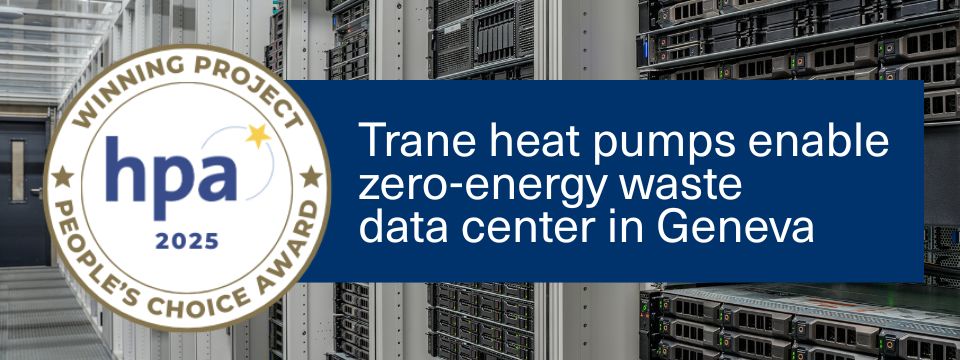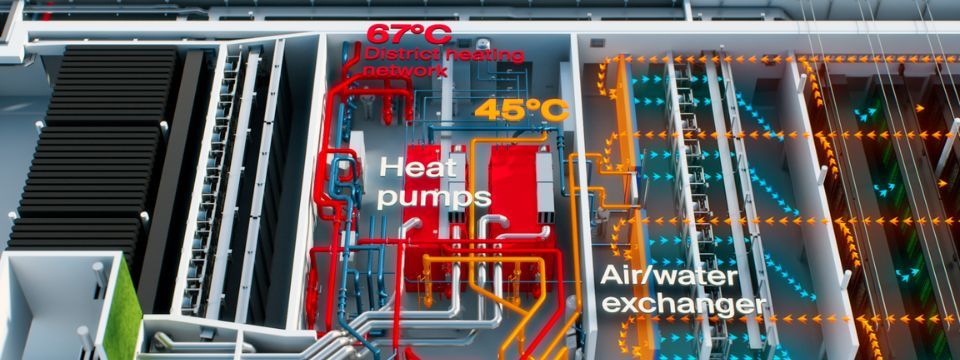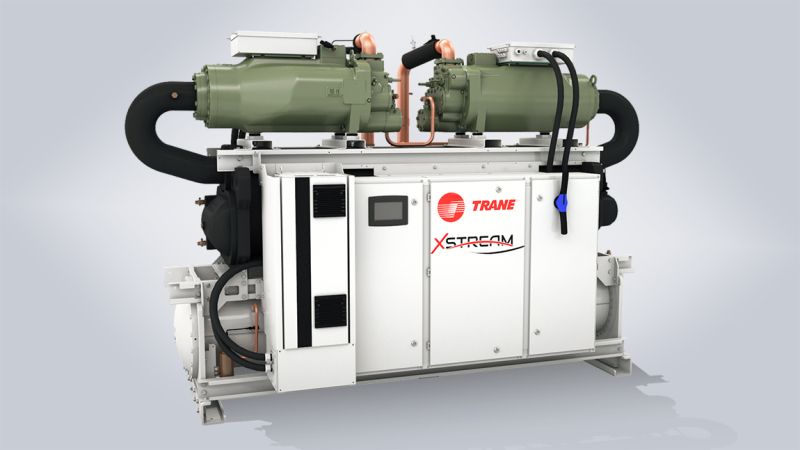
Challenge
Located in Geneva, Switzerland, the Infomaniak data center faced the challenge of transforming a traditionally energy-intensive facility into a sustainable and efficient model of digital infrastructure. Located in a residential neighbourhood, the underground facility needed to integrate seamlessly with its surroundings while addressing the environmental impact of its operations.
The primary challenge was to recover and reuse up to 100% the waste heat generated by servers and other components, which is typically rejected in conventional data center designs.
Solution
Infomaniak’s data centre cooling system operates without traditional chillers, relying instead on two innovative modes that eliminate the need for conventional mechanical cooling and reduce environmental impact.
In normal mode, the heat generated by the servers is captured and upgraded by heat pumps, then fed into the district heating network. The cold released during this process is used to cool the servers, creating a highly efficient, circular energy system.
In backup mode, if the heat pumps are temporarily inactive (for example, when the heating network cannot absorb the recovered energy), the system switches to direct free cooling using filtered outside air — with no active cold production involved.
At the heart of the energy recovery system are two Trane RTWF heat pumps, which raise the temperature or recycled low-grade server-heat from 45°C to 67°C in summer and up to 85°C in winter. This temperature range is required to match the specifications of the local district heating operator (Geneva’s Industrial Services - SIG).
Prior to installation at the site, the Trane heat pumps have been tested and performance-validated under rigorous laboratory conditions at Trane’s state-of-the art laboratory in Charmes, France. This testing confirmed their ability to deliver consistent performance even in demanding operating environments.
Results
The implementation of Trane heat pumps enabled Infomaniak to recover 1.7 MW of heat, which can warm 6,000 homes in winter or provide 20,000 five-minute showers in summer.
The data centre generates an estimated annual output of 14.9 GWh, helping avoid the combustion of 3600 tCO2eq of natural gas or 5500 tCO2eq of pellets per year.
This also eliminates more than 200 heavy vehicle trips annually, reducing emissions and particulate pollution. The project has received multiple accolades, including the Swiss Ethics Prize and the Cantonal Sustainable Development Prize, and serves as a replicable model for sustainable energy practices within the data centre sector.
The facility is expected to reach full operational capacity by 2028 and continue its heat supply for at least two decades, demonstrating the potential for ICT infrastructure to be seamlessly integrated with residential areas and contribute to clean, circular energy systems.
You can read more about this story and watch the video on Infomaniak’s website.



